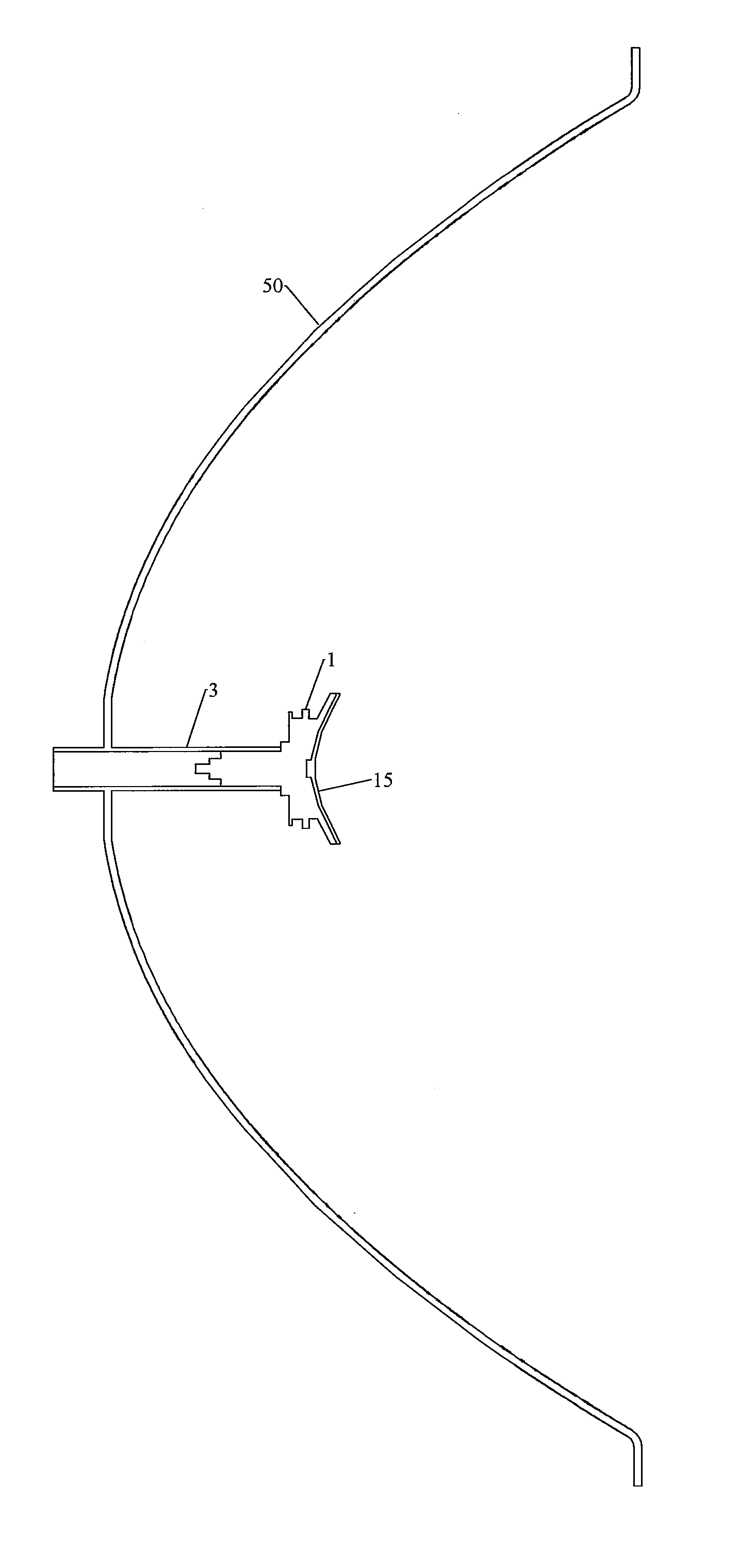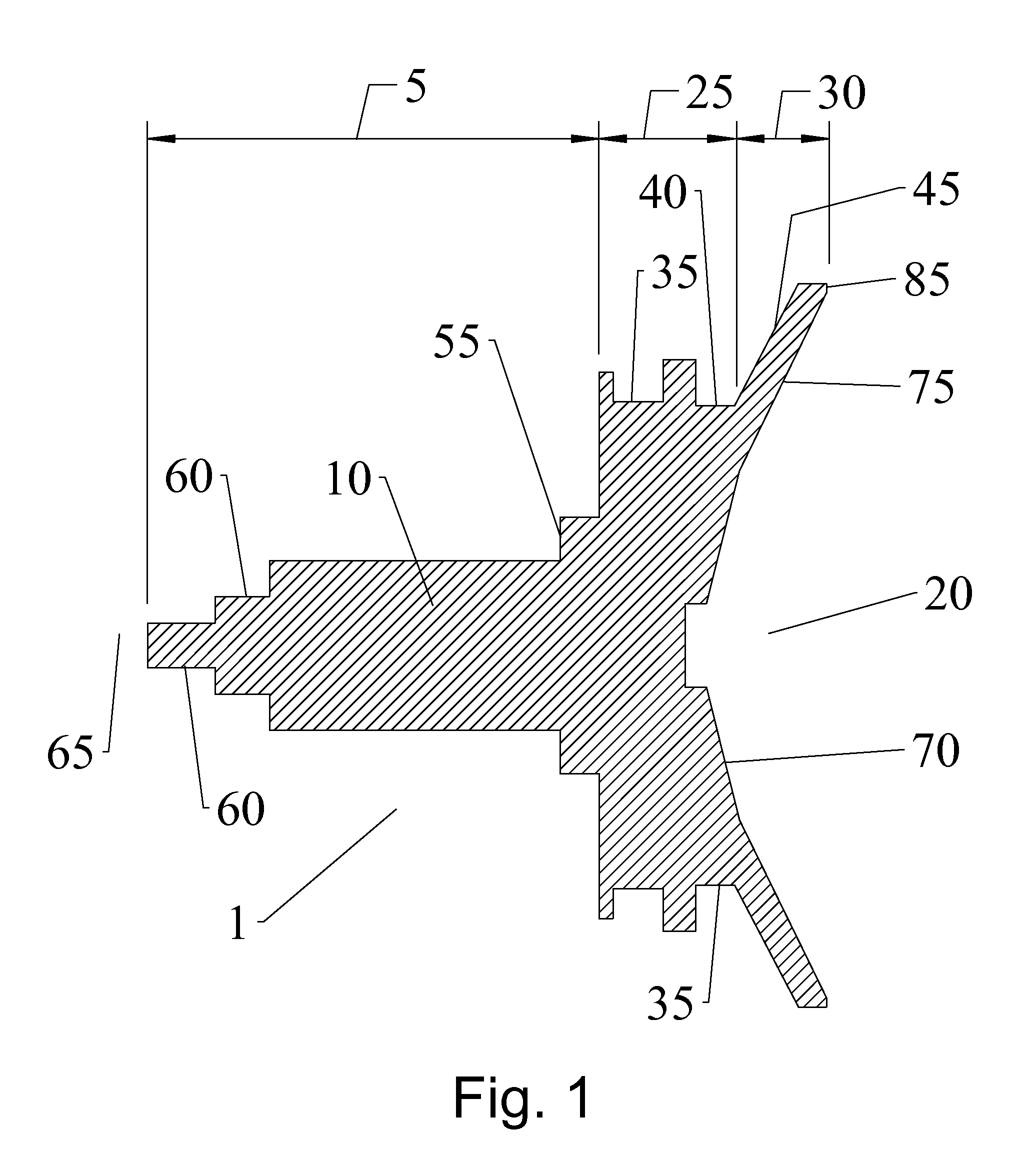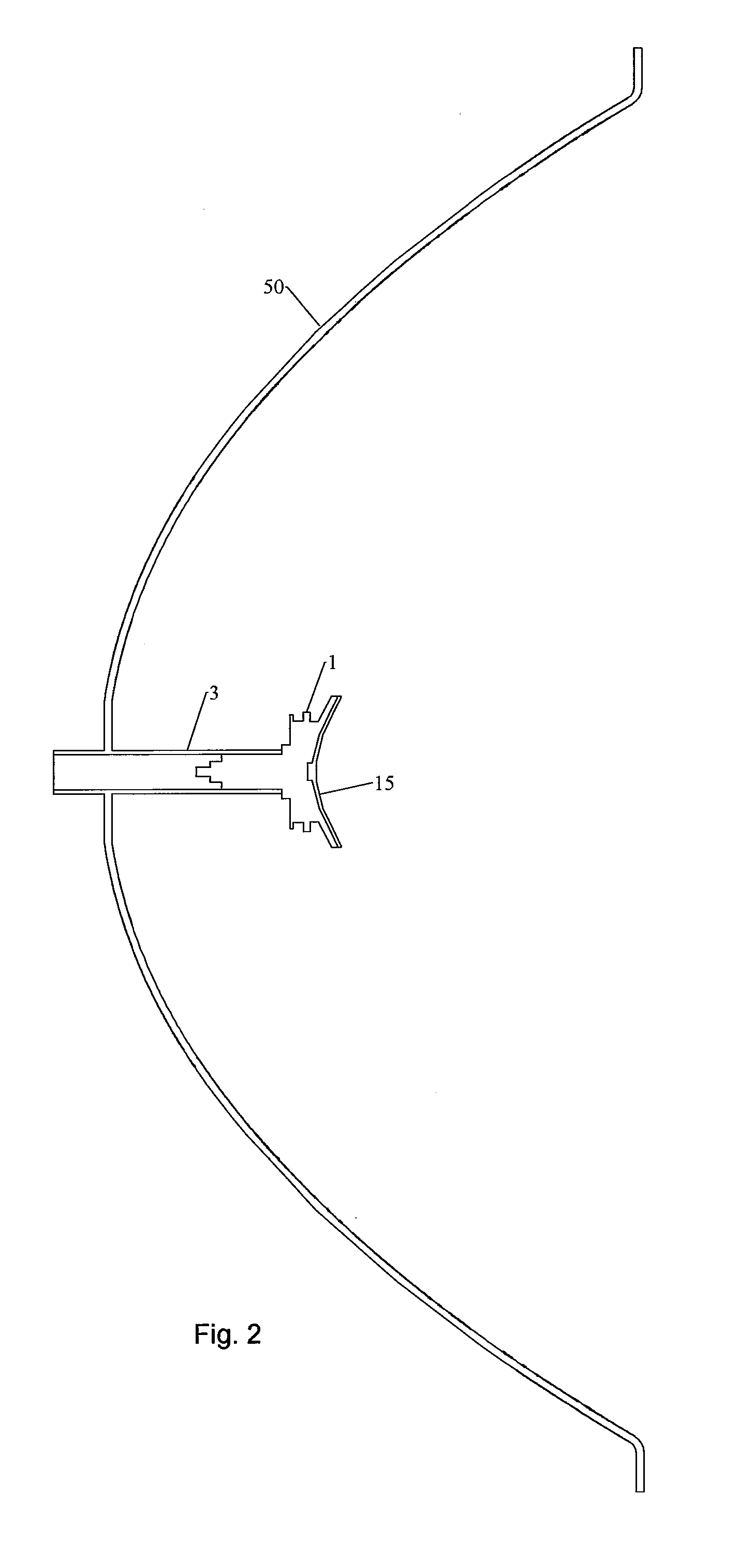Controlled illumination dielectric cone radiator for reflector antenna
a dielectric cone radiator and reflector technology, applied in the direction of antennas, electrical equipment, etc., can solve the problem of increasing the overall manufacturing cos
- Summary
- Abstract
- Description
- Claims
- Application Information
AI Technical Summary
Benefits of technology
Problems solved by technology
Method used
Image
Examples
Embodiment Construction
[0020]The inventor has recognized that improvements in radiation pattern control and thus overall reflector antenna performance may be realized by reducing or minimizing the electrical effect of the feed boom end and sub-reflector overspill upon the radiation pattern of conventional dielectric cone sub-reflector assemblies.
[0021]As shown in FIGS. 1, 2 and 4, a cone radiator sub-reflector assembly 1 is configured to couple with the end of a feed boom waveguide 3 at a waveguide transition portion 5 of a unitary dielectric block 10 which supports a sub-reflector 15 at the distal end 20. The sub-reflector assembly 1 utilizes an enlarged sub-reflector diameter for reduction of sub-reflector spill-over. The sub-reflector 15 may be dimensioned, for example, with a diameter that is 2.5 wavelengths or more of a desired operating frequency, such as the mid-band frequency of a desired microwave frequency band. The exemplary embodiment is dimensioned with a 39.34 mm outer diameter and a minimum...
PUM
 Login to View More
Login to View More Abstract
Description
Claims
Application Information
 Login to View More
Login to View More - R&D
- Intellectual Property
- Life Sciences
- Materials
- Tech Scout
- Unparalleled Data Quality
- Higher Quality Content
- 60% Fewer Hallucinations
Browse by: Latest US Patents, China's latest patents, Technical Efficacy Thesaurus, Application Domain, Technology Topic, Popular Technical Reports.
© 2025 PatSnap. All rights reserved.Legal|Privacy policy|Modern Slavery Act Transparency Statement|Sitemap|About US| Contact US: help@patsnap.com



